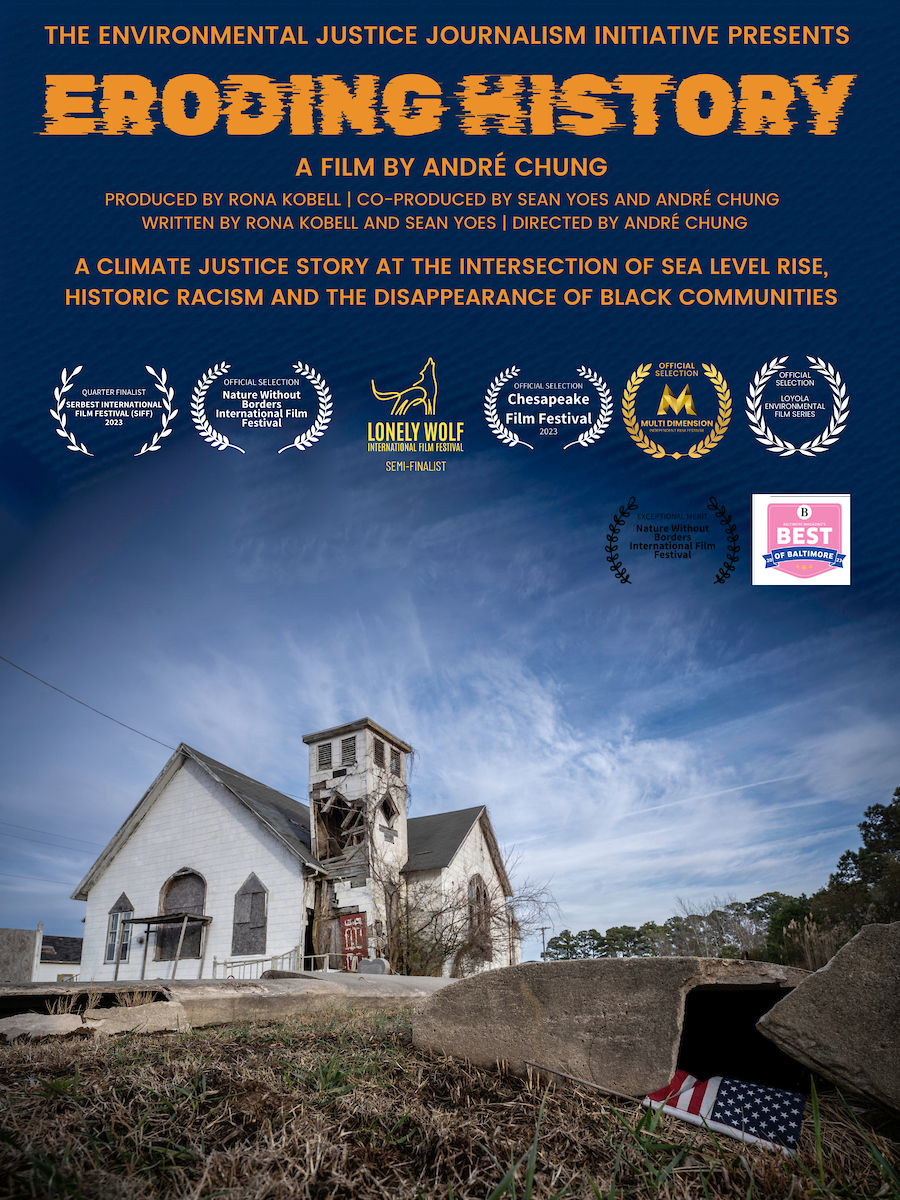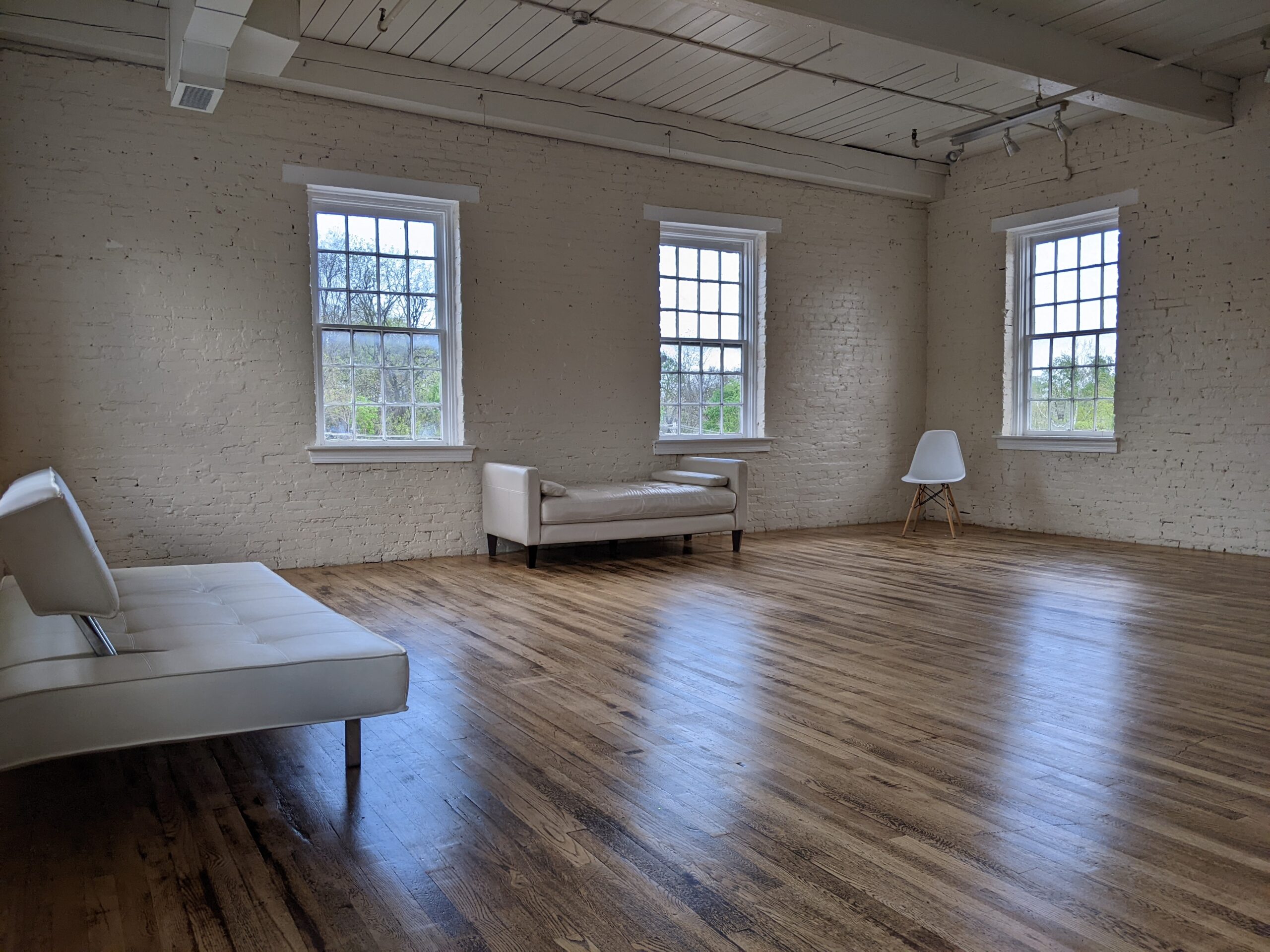Award-winning photojournalist and portrait photographer André Chung has operated out of a studio here at Savage Mill since 2009. Formerly a staff photographer at The Baltimore Sun where he was nominated for a Pulitzer Prize five times, André’s career has focused on telling the story of people of color, particularly Black people. Clients have included a number of celebrities as well as commercial clients such as Apple, AARP, Time magazine, The Washington Post Magazine, The New York Times, NBC News Pictures, and The Atlantic.
This coming Monday, André’s short film “Eroding History” screens on Maryland Public Television as part of Chesapeake Bay Week, an annual celebration of our nation’s largest estuary. Curious to learn more about the story behind this film, which is described as “a climate justice story at the intersection of sea level rise, historic racism and the disappearance of Black Communities”, we spoke with André before he left for an out-of-town assignment.
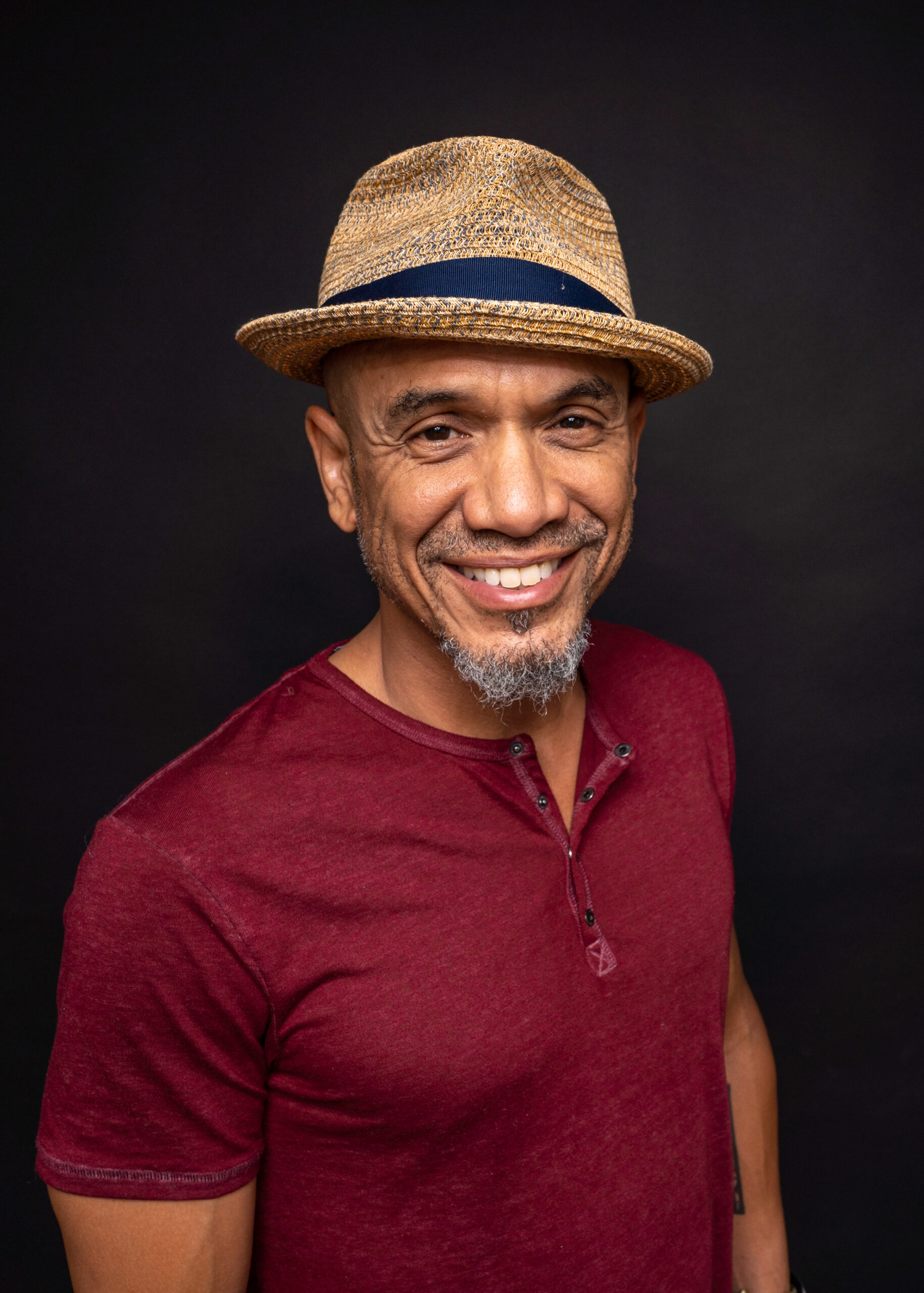
SAVAGE, MD — 5/30/23 — by André Chung #_AC21486
Tell us about the genesis of “Eroding History”.
My producer, Rona Kobell, had been studying Black land loss on the Eastern Shore and lived on Deal Island for a month while researching her master’s thesis. As it happened, she reached out to my old friend and colleague, Sean Yoes, while Sean and I were in Salisbury working on a mini documentary on the legacy of lynching in Maryland. She suggested we swing by to have a look at the church on Deal Island. At lunch, we drove over there and the condition of the church and cemetery made a real impact on us and we decided to make a film. Sean signed on as co-producer and I directed it.
How and why did you get involved with the film?
I’ve known my teammates on this project for a couple of decades, have worked with them on other projects, and knew their level of expertise and professionalism firsthand. I knew we’d be able to tell a compelling story and examine the issues in a thoughtful way. I had a Dream Team!
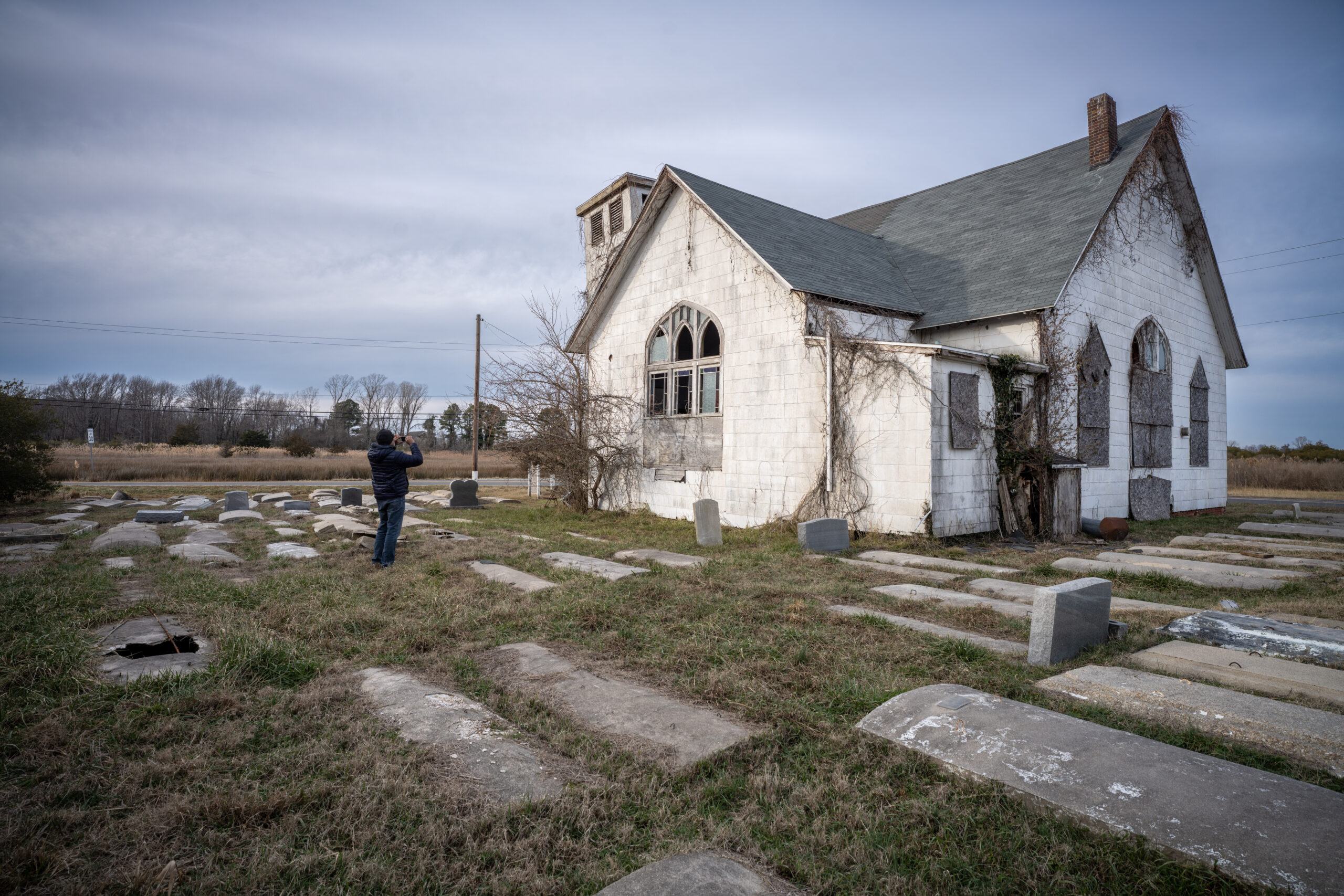
DEAL ISLAND, MD — 1/13/22 — Black residents of Deal Island have long dealt with systemic racism, redlining, forced to live on low land and denied property on high ground, and a lack of resources, whether public or private. Now climate change is raising the sea level which has been slowly encroaching on the historically Black community. Houses and churches are being inundated and accessibility around the island changes with the tides..…by André Chung #_AC16687
What was something that struck you while making the film?
Deal Island is an interesting place. It is quintessentially Maryland, set on the water and populated by hard working, god-fearing folks, both Black and White. Besides the beauty of the place, which we captured for the film, the stories that people told and the strong sense of community that is evident felt like stepping into another time.
What do you hope comes from the film?
The most important thing to our team is for policymakers, activists and other stakeholders to see the film and consider the questions we’ve raised and think about how they can create meaningful policy going forward. We’d like to see solutions that addresses the climate and historical injustices and help Black communities preserve their history, mitigate land loss, and improve their communities throughout the state. We have a meeting scheduled the day after our MPT broadcast with the Maryland Department of Environment Environmental Justice Committee to screen the film and participate in a discussion about how the State can begin to do some of the things we’re talking about.
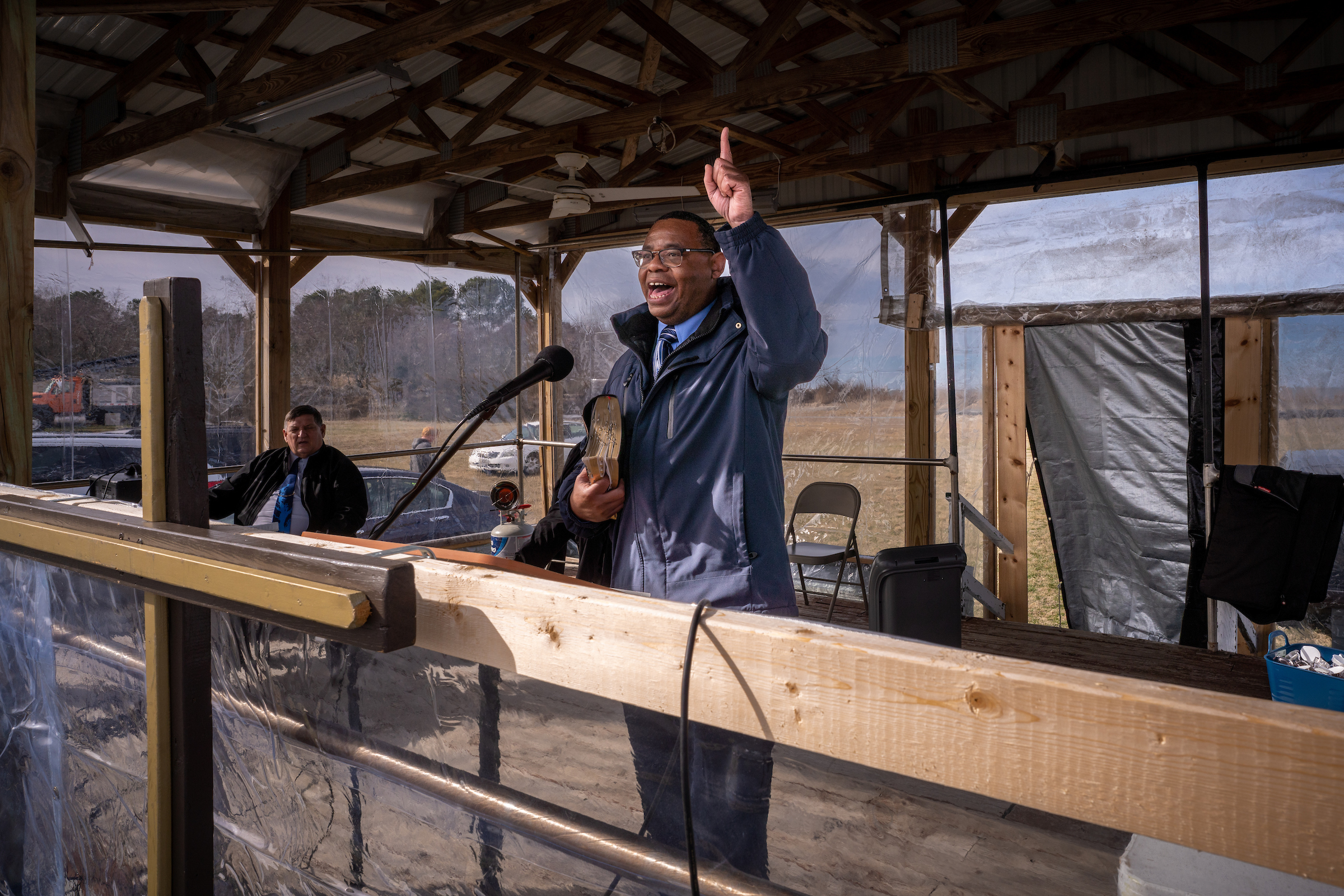
DEAL ISLAND, MD — FEBRUARY 05: Pastor DeAngelo “Tony” Johnson, of Macedonia Church in Dames Quarter and St. Charles in Chance, delivers his sermon.
During the pandemic, three congregations from separate Methodist churches on or near Deal Island, came together to worship on a field by the waters of Tangier Sound, part of the Chesapeake Bay. The congregations included two White and one Black and have helped to foster inclusiveness and promote shared values…. (photo by Andre Chung for The Washington Post)
How did you get started with the type of filmmaking and photography that defines you?
When I was a photojournalism student at UMd I was consistently presented with images of Black people that were stereotypical at best, and quite often, absolutely racist. This was considered “good” photojournalism and I knew it wasn’t representative of my experience, or the experience of people of color in general. My mother raised me to step into the gap and that’s what I did. I think that Black people and other people of color have historically been painted thinly in the American story, and it hasn’t contributed to an accurate understanding of history and how that impacts us in the present. We can take a look at the state of our country for proof of that.
Tell us about another project you’re proud of.
In 2020 the uprising triggered by the murder of George Floyd seemed to focus America’s attention on social injustice for the first time in my life. The protest movement in DC was particularly robust, and frankly underreported. Even now, I don’t think that the majority of the people in the DMV realize how violent the police were as they dealt with protestors, the illegal tactics they used, and the overreach that came from unit commanders. Nor are many people aware that as the protests went on, Metropolitan Police killed two more Black men. One of those murders resulted in prison sentences for the officers involved. I documented all of this and produced an essay called We Keep Us Safe that was awarded the Robert F. Kennedy Award for Domestic Photography, one of journalism’s highest honors.
Why did you choose to make Savage Mill your home, and why is it a good fit for your business?
I moved into Savage Mill in 2009, a few months after I took a buyout from The Baltimore Sun and stepped into the current phase of my career. At first it was the affordability – I was able to have a space outside the home to focus on work. As I settled in, it was easy to become part of the Mill community and I started making relationships with some of the other business owners in the Mill. In 2012 I moved in with Jennifer Domenick, who owned Love Life Images and had her own beautiful studio space in the Spinning Building. We were partners for nearly 10 years, but after the pandemic, Jennifer decided to move on and I run the studio by myself now. It’s a gorgeous space and I guess I consider it home now. It serves my needs perfectly, and I’m able to rent it out to other photographers and businesses, which keeps me connected to the larger community.

